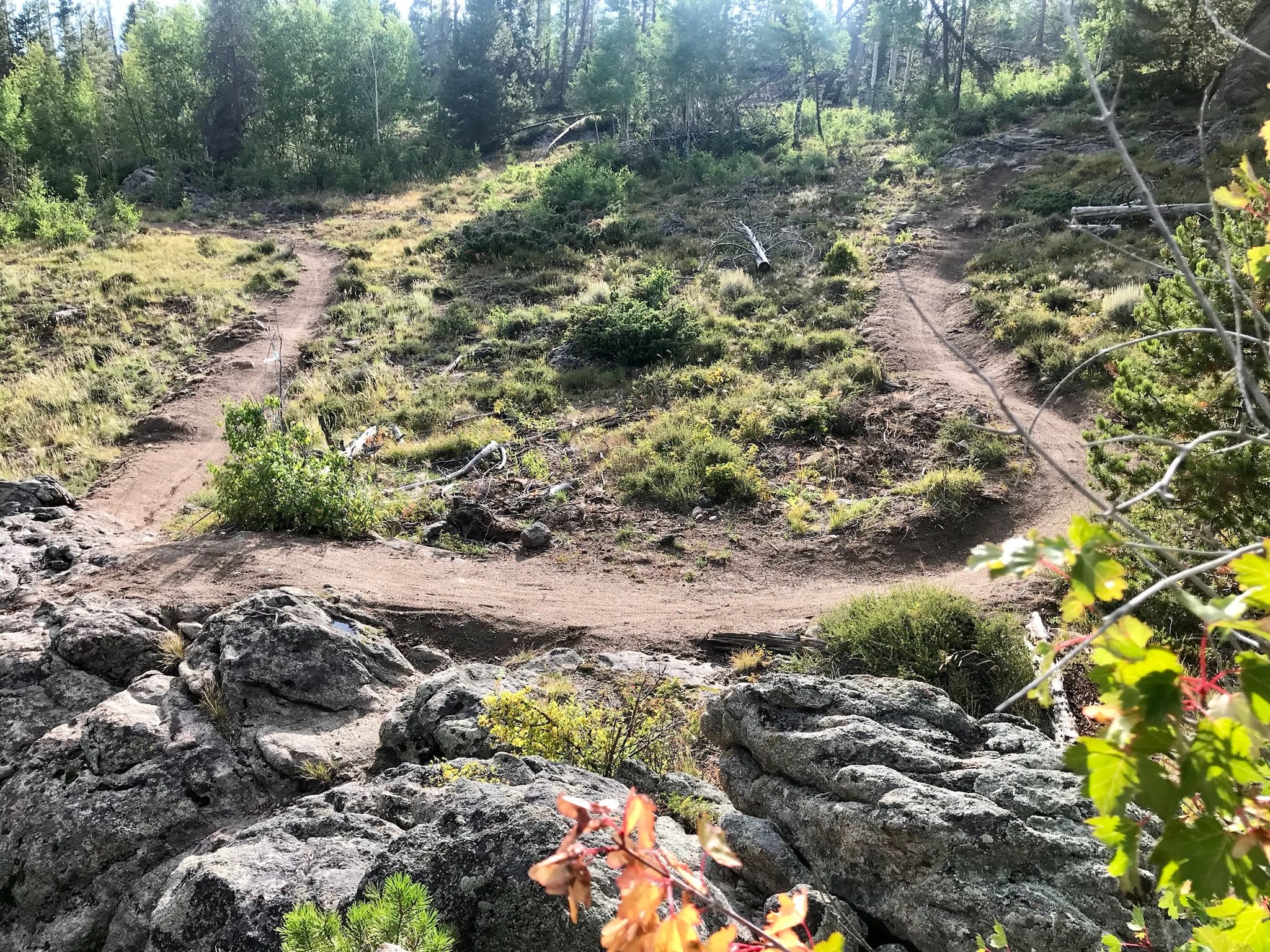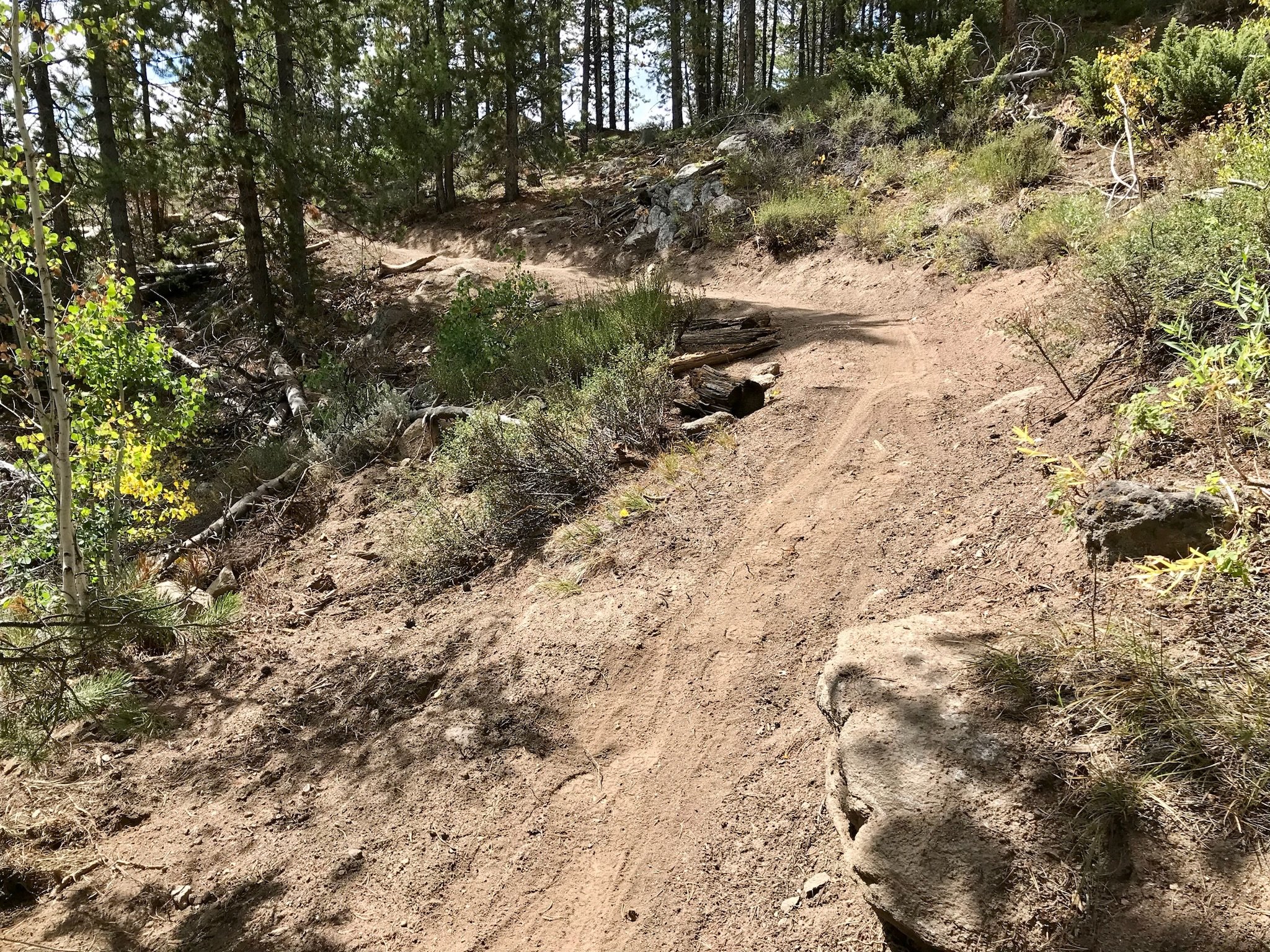For climbing optimized trails, we strive for average grades of 4-7% depending on intended trail difficulty, terrain, and geology. Frequent grade reversals helps sustain momentum and occasional segments of flatter or slightly downhill grades allows riders opportunities for recovery without the need to stop. We also look for appealing spots to include natural “rest areas” such as great viewpoints, pleasant creeks, waterfalls, or unique rock formations or plant life. Switchback turns are built to be wide enough to comfortably maneuver a bike through, insloped to aid in turning and when possible have a substantial grade reversal leading into the turn to gain momentum. Technical features such as rock gardens or wheel lifts can make a climbing trail more interesting or challenging, but should be avoided in steeper sections. A great climbing trail offers a solid workout without undue suffering or hike-a-bike. In other words, an enjoyable way to get to the top.
Our climbing optimized trail projects include:
Broken Spade [Trail Smart Sizing, 2019]
Salad Spinner [Phases, 2021]
Burnout Loop South [Idlewild, 2022]
Crosstrails [Idlewild, 2023]
Phase 0.5 [Phases, 2023]










